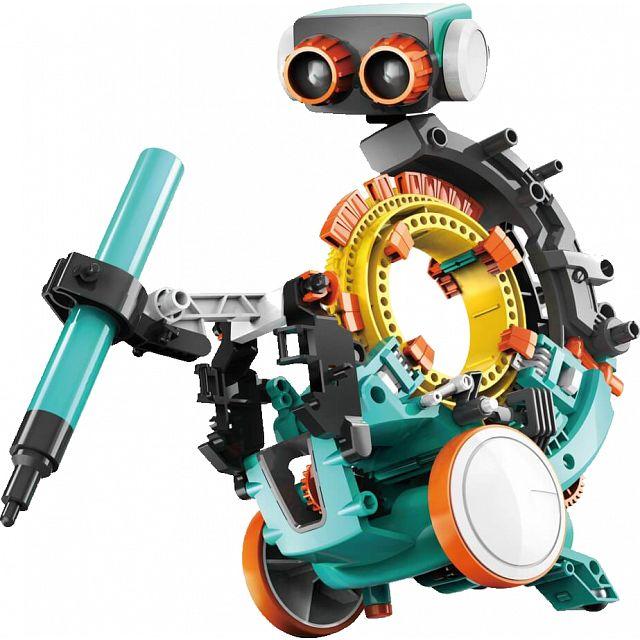
Programmable Robots That Can Solve Puzzles
In an era where technology constantly pushes the boundaries of possibility, the realm of robotics has taken an intriguing turn. Imagine a metal arm deftly maneuvering pieces of a jigsaw puzzle, or a wheeled robot deftly strategizing its next move in a complex game of chess. Welcome to the world of programmable robots that can not only confront challenges but also solve puzzles, merging creativity with computational prowess. These remarkable machines are not merely products of engineering; they are embodiments of code and creativity, designed to tackle problems that require both ingenuity and strategy. In this article, we will explore the fascinating landscape of puzzle-solving robots, examining how they work, the technologies behind them, and the implications of their capabilities in various fields-from education to entertainment and beyond.
Q&A
Q&A: Exploring Programmable Robots That Can Solve Puzzles
Q1: What are programmable robots, and how do they work?
A1: Programmable robots are machines designed to execute specific tasks based on a set of coded instructions. They operate using sensors, actuators, and processors, allowing them to interact with their environment. By programming them with algorithms, these robots can adapt their movements and decision-making processes to tackle various challenges, including solving complex puzzles.
Q2: What kinds of puzzles can these robots solve?
A2: Programmable robots can tackle a wide range of puzzles, from classic jigsaw puzzles to more complex logic grids and physical challenges like mazes and Rubik’s Cubes. Their capabilities enable them to analyze and manipulate objects, making them versatile problem solvers in both physical and digital domains.
Q3: Who typically programs these robots?
A3: Programmable robots can be programmed by a diverse group of individuals, including hobbyists, educators, researchers, and engineers. Educational platforms often use them to teach coding and robotics, making them accessible for students. In corporate settings, skilled programmers develop more sophisticated robots for research and industry applications.
Q4: What are the benefits of using robots to solve puzzles?
A4: Using robots for puzzle-solving showcases their potential for automation and efficiency. Robots can work tirelessly without fatigue, execute precise calculations, and explore numerous solutions in a fraction of the time it would take a human. This capability enhances applications in fields such as artificial intelligence, problem-solving strategies, and human-robot interaction studies.
Q5: Are there any notable examples of puzzle-solving robots?
A5: Yes, several innovative puzzle-solving robots have captured attention. For instance, “Robot Cubers” have been specially designed to solve Rubik’s Cubes in mere seconds. Moreover, the “MIT Cheetah” robot has demonstrated agility in navigating complex mazes, effectively showcasing both speed and accuracy in puzzle-solving scenarios.
Q6: What challenges do programmables robots face when solving puzzles?
A6: While advancements continue, programmable robots still encounter challenges such as recognizing irregular shapes, adapting to dynamic environments, and dealing with unforeseen obstacles. These factors can complicate the programming and sensors, making it difficult for robots to execute tasks with the same intuition as a human.
Q7: How do researchers envision the future of robots solving puzzles?
A7: Researchers foresee a future where programmable robots not only solve puzzles but also learn from experiences. Advancements in machine learning could lead to robots that improve their problem-solving skills over time, enabling them to tackle increasingly complex challenges and collaborate with humans in innovative ways.
Meet N1X Da Queen Of A-Pop
N1X Da Queen Of A-Pop Sign up And Enter Her World Streaming Exclusive Music From N1X And Da Super Group Da Queens
Only On N1XMusic.com

Q8: What implications does this technology have for education and entertainment?
A8: The integration of programmable robots into educational settings promotes engagement with STEM subjects and enhances critical thinking. In entertainment, these robots could revolutionize games and interactive experiences. As they become more sophisticated, they could even develop unique strategies for solving puzzles that challenge human players.
Q9: How can individuals get involved with programmable robots?
A9: Enthusiasts can begin by exploring hobbyist kits available in the market, engaging with online tutorials, or participating in robotics clubs. Many platforms also offer coding challenges that allow users to experiment with programming robots to solve puzzles, providing an engaging way to develop skills in robotics and artificial intelligence.
Q10: What are the ethical considerations surrounding programmable robots?
A10: As with any emerging technology, ethical considerations are paramount. Issues such as job displacement, reliance on machines, and the need for responsible programming practices require ongoing dialogue among technologists, policymakers, and society. Balancing innovation with human values will be crucial as these robots become more integrated into our daily lives.
Future Outlook
As we venture into the exciting realm of programmable robots that can tackle puzzles, we not only witness technological advancement but also redefine the boundaries of creativity and problem-solving. These remarkable machines bridge the gap between abstract concepts and tangible solutions, showcasing how far we’ve come in robotics and artificial intelligence.
Yet, the journey doesn’t end here. The potential applications of these puzzle-solving robots extend beyond mere play; they hint at a future where automation enhances learning, entertainment, and even complex problem resolution in various fields. As we continue to refine and explore their capabilities, we are reminded that each innovative step brings us closer to a world where collaboration with machines can unlock new possibilities.
In a world that increasingly demands agility in thought and action, puzzle-solving robots remind us that ingenuity knows no bounds. Whether you’re an enthusiast, a developer, or simply curious, the invitation stands: follow along as we unravel the next chapters of robotic evolution and witness how these creations can inspire our human intellect to embrace challenges-just as they do.
Are you a content creator or someone with a big social media following?
Want to earn real cash promoting The Queen of A-POP?
Join the N1X Music Promoter Program — it’s as easy as:
1️⃣ Sign Up
2️⃣ Promote
3️⃣ Get Paid





No Comments